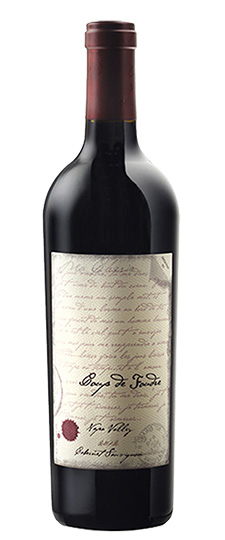Wine Score
Robert Parker’s Wine Advocate
Slightly better is the 2011 Cabernet Sauvignon Arc Vineyard from Howell Mountain. This wine offers even denser fruit, loads of graphite, mulberry, and blackberry fruit, an enticing minerality, a full-bodied mouthfeel, and again, nothing missing in it. It’s the whole package – rich, concentrated, fleshy and again, quite evolved and supple. Drink it over the next 20+ years. 94 points
Grape Variety
Cabernet Sauvignon Wine
Cabernet Sauvignon is probably the most famous red wine grape variety on Earth. It is rivaled in this regard only by its Bordeaux stablemate Merlot, and its opposite number in Burgundy, Pinot Noir. From its origins in Bordeaux, Cabernet has successfully spread to almost every winegrowing country in the world. It is now the key grape variety in many first-rate New World wine regions, most notably Napa Valley, Coonawarra and Maipo Valley. Wherever they come from, Cabernet Sauvignon wines always seem to demonstrate a handful of common character traits: deep color, good tannin structure, moderate acidity and aromas of blackcurrant, tomato leaf, dark spices and cedarwood.
Used as frequently in blends as in varietal wines, Cabernet Sauvignon has a large number of common blending partners. Apart from the obvious Merlot and Cabernet Franc, the most prevalent of these are Malbec, Petit Verdot and Carmenere (the ingredients of a classic Bordeaux Blend), Shiraz (in Australia’s favorite blend) and in Spain and South America, a Cabernet – Tempranillo blend is now commonplace. Even the bold Tannat-based wines of Madiran are now generally softened with Cabernet Sauvignon.
DNA profiling carried out in California in 1997 confirmed that Cabernet Sauvignon is the product of a natural genetic crossing between key Bordeaux grape varieties Cabernet Franc and Sauvignon Blanc. Most wine authorities agree that this crossing happened only within the past few centuries, making the variety’s global fame and dominance all the more impressive.
There are two key reasons for Cabernet Sauvignon’s rise to dominance. The most simple and primordial of these is that its vines are highly adaptable to different soil types and climates; it is grown at latitudes as disparate as 50°N (Okanagan in Canada) and 20°S (northern Argentina), and in soils as different as the Pessac-Leognan gravels and the iron-rich terra rossa of Coonawarra. Secondary to this, but just as important, is that despite the diversity of terroirs in which the vine is grown, Cabernet Sauvignon wines retain an inimitable “Cab” character, nuanced with hints of provenance in the best-made examples. There is just a single reason, however, for the durability of the variety’s fame and that is simple economics; the familiarity and marketability of the Cabernet Sauvignon name has an irresistible lure to wine companies looking for a reliable return on their investment.
A vigorous variety (another characteristic in its favor), Cabernet Sauvignon produces a dense leaf canopy and relatively high grape yields, giving wine producers a fairly open choice between quantity and quality. Careful vineyard management is essential, however, to coax the best out of the fruit.
As a late-flowering and late-ripening variety, Cabernet Sauvignon grapes mature slowly. This can also work for or against wine quality; in a cold season or climate there is a risk of the grapes failing to ripen fully, while in most other conditions the steady rate of progress offers producers a wider choice of harvest dates.
Few would argue that the finest examples of Cabernet Sauvignon wine are found in Bordeaux and California, a standpoint supported by the 1976 Judgment of Paris. The past two decades have seen a raft of quality Cabernets emerging from New World regions such as Maipo in Chile and Coonawarra in Australia. These are gaining popularity with an increasingly broad consumer base as the world’s most prestigious Cabernet Sauvignon wines become prohibitively expensive. The variety has now made its way even into such established and traditional Italian names as Chianti and Carmignano (albeit restricted to 15 percent of the permitted blend), evidence that even the oldest and most traditional wine institutions now recognize the value of this most famous of grapes.
Synonyms include: Bidure, Bouche, Bordo, Bouchet, Burdeos Tinto, Lafite, Vidure.
Food matches for Cabernet Sauvignon include:
- Fillet steak with foie gras and truffles
- Beef wellington with honey roasted carrots
- Korean-style beef stir fried in garlic, soy and sesame
Region
Howell Mountain Wine
Howell Mountain is one of Napa Valley’s most prestigious hillside AVAs. It covers an area of land on the Vaca mountain range in the northern part of the valley, just above the town of St Helena. Howell Mountain is famous for its robust, complex red wines, the majority of which are made from Napa’s favorite, Cabernet Sauvignon.
A long, thin area, the Howell Mountain AVA measures about 10 miles (16km) from northwest to southeast and less than two miles across at its widest point around the town of Angwin. The local vineyards are grouped in several distinct areas, carefully oriented according to the lie of the land, in contrast to the densely planted valley floor below. There is no Howell Mountain peak – the AVA is named for the tiny Howell Mountain township, which sits 1690ft (515m) above sea level.
In order to claim the Howell Valley appellation, the vineyards must be planted above the 1400-ft (430-m) contour line, and reach as high as 2200ft (670m) above sea level. This puts Howell Mountain above the fog that serves as a climate moderator in the valley below. Instead, Howell Mountain’s vignerons rely on the vineyards’ elevation above the valley floor for climate moderation.
Influenced by the local topography, diurnal temperature variation is high here, giving the grapes the opportunity to bask in the Californian sunshine throughout the day and cool down overnight. Grapes develop intense color and flavor without becoming baked by stifling overnight heat. This shows in Howell Mountain wines, which are celebrated for their acid structure and aromatic depth.
Howell Mountain’s soil types are also influenced by the topography – many of Howell Mountain’s vineyards are planted on volcanic soils, while iron-rich clay is also common. These soils tend to be thin, dry and lacking in nutrients, which has long been considered conducive to good viticulture, as it forces the vines to produce small, intense grapes, rather than leafy foliage. This intensity translates into the finished wines, offering tannic structure and aging potential.
Local vignerons have honed their choice of grape varieties over the past few decades to cover the classic Californian “big reds”: Cabernet Sauvignon, Merlot, Zinfandel and Petite Sirah. White wines barely figure in the Howell Mountain wine portfolio; only Viognier and Chardonnay have managed to get themselves noticed within the appellation’s vineyards. Howell Mountain Cabernet Sauvignon and Zinfandel are some of the most celebrated wines in California, with their big, powerful flavors and robust tannins.
Howell Mountain was the very first sub-region in the Napa Valley to be officially recognized as an AVA, in January 1984. The Napa Valley AVA was created in 1981, the second in America’s wine history (Missouri’s Augusta was the first). Interestingly, Italy was introducing its DOCG tier at a similar time, starting in 1980 with Barolo and Brunello; just like these two top-flight Italian wine zones, Howell Mountain is a highly regarded hilltop vineyard area producing some of its country’s very finest red wines.
Producer Notes
Hundred Acre Vineyard
Hundred Acre is an estate based in St Helena in the Napa Valley. It is particularly known for its opulent, single-vineyard Cabernet Sauvignon wines, which regularly achieve top scores from from the major wine critics and publications, and always sell out on release.
Proprietor and former investment banker Jayson Woodbridge bought the 3.6-hectare (9-acre) Kayli Morgan vineyard in Howell Mountain in the late 1990s, naming it for the Hundred Acre Wood from Winnie-the-Pooh. This has been joined by the Ark Vineyard Cabernet Sauvignon from a 6-ha (15-acre) property on Glass Mountain in St Helena, and the Few and Far Between cuvée from a 2-ha (5-acre site) near the historic Eisele vineyard which features around 10 percent Cabernet Franc. The Precious is a cuvée drawn from all three properties.
The vineyard is managed carefully, in such a way that the practices are commensurate with the price of the wines. Vines are pruned to one grape cluster per vine, producing very low yields, and five passes are made at harvest time. At the winery, grapes are sorted berry by berry, and fermented in French oak, usually 500 litre puncheons. Aging time for the wines varies from vintage to vintage, but two years is not out of the ordinary.
Hundred Acres also makes the Ancient Way Shiraz from the Barossa Valley in Australia, a project that saw its first vintage in 2004. This is sourced from an estate-owned vineyard near Greenock Creek, and is aged in new French oak for two years, then racked into fresh new oak French barrels for another two years, before a final year in bottle. It is lush and velvety with masses of black fruits and again is one of the most expensive wines from its region.
Jayson Woodbridge also owns Layer Cake, a collection of wines from around the world at more everyday prices, and the Cherry Pie and Cherry Tart ranges of Californian Pinot Noir and Chardonnay. Another Napa Valley Cabernet is produced under the Fortunate Son label.

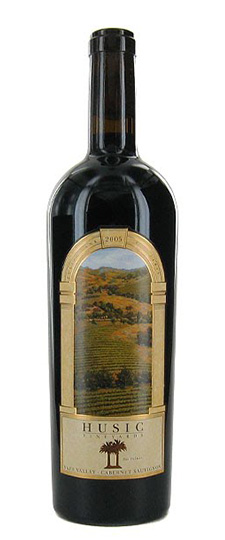
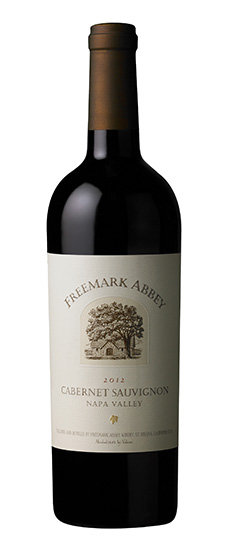

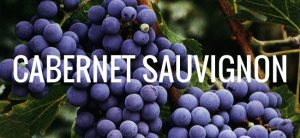

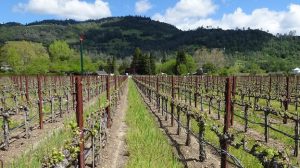
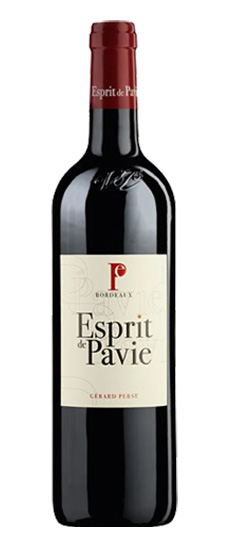

![Amuse Bouche, Napa Valley [Merlot/Cabernet Franc] 2010](https://www.wineyou.com/wp-content/uploads/2017/06/Amuse-Bouche-Napa-Valley-Merlot-Cabernet-Franc-2010.jpg)
